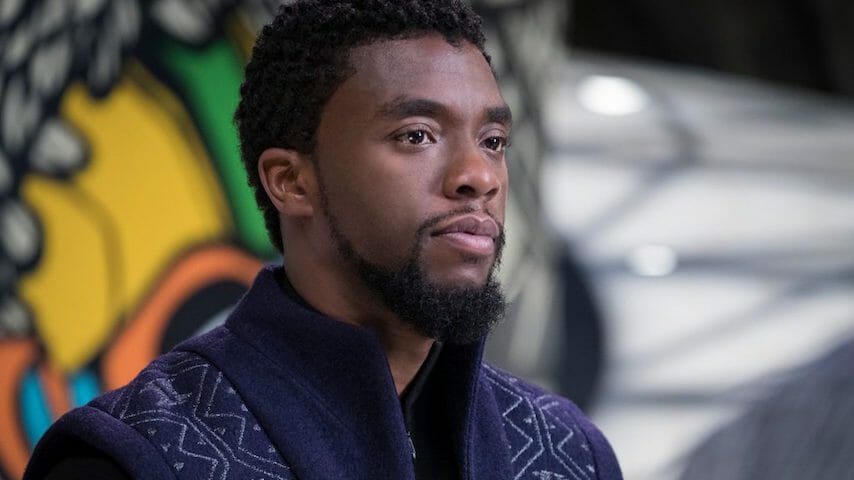On Chadwick Boseman’s Private Pain and Hollywood’s Ableism Problem
Audiences want to have it both ways; enjoy a slice of horrorcore without grappling with the gravity of seeing a body that invites vulnerability.
Photo Courtesy of Disney TV Features Chadwick Boseman
The internet creates challenges. In a literal sense, some challenges are meant for harmless fun, from TikTok’s current WAP dance recreations to 2016’s Mannequin Challenge. In another way, the Internet fosters an arena for intellectual debate, confronting users to defend their positions on any topic. At its most disappointing, for a certain subset of users, daring to exist on the Internet becomes the ultimate challenge. See the initial reaction to Chadwick Boseman’s last Instagram live back in April, where Boseman struggled to announce a partnership for racial justice in healthcare while presenting his cancer-weakened body in frame, and was not met by a respectful audience. Crows of ”Crack Panther” abounded so ferociously that Boseman took down the post.
In that moment, our real life Black Panther was met with a repeat chorus of a former challenge taunt: ”Is this your King?”. The Internet condemned Boseman for his so-called failure to possess a body that, as Killmonger had sneered, “could lead [you] into the future.” In the wake of Boseman’s death, public conversation shifted instantaneously to celebration of his life, largely erasing the segment of his life—four years—that he privately spent ill. Instead, there was a massive reframing of his career, especially surrounding rigor of his roles in light of his progressive cancer status. While well-intentioned, disability rights activists pointed out that this effusive praise of Boseman’s ability to pass as able-bodied while possessing an extreme disability undermines the disabled community entirely. In the words of Imani Barbarin, a prominent black disability blogger, she was disgusted by how Boseman’s body had already been turned into “inspiration porn to shame others into productivity.” Reckoning with his life’s value must incorporate his body riddled with affliction side-by-side with his abledness; inherent dignity belonged to both.
While the public’s disgust with Boseman’s weight loss is indefensible, the American imagination is primed for this response. For as much as film and television loves to portray medical trauma, from House M.D.’s violent seizures to Gwyneth Paltrow’s death sequence in Contagion, the pleasure the audience exacts from these scenes isn’t an honest representation of the ill—it’s luxuriating in the grotesque of the sickened body. Because there’s an implicit understanding that the sickness appearing on screen is pure theater, audiences can have it both ways; enjoy a slice of horrorcore without grappling with the gravity of seeing a body that invites vulnerability. The question then to ask is this: Why aren’t we seeing actors within the disability community fill these roles, or any roles for that matter?
In truth, Hollywood fails or severely lags behind in both creating roles for members of the disabled community as well as how they’re represented. The New York Times reported. this year that out of a survey of the top TV shows on air in 2018, only 18 percent featured actors with disabilities, a rise from a mere 7 percent three years prior. In contrast, roughly 80 percent of the characters written to have disabilities are played by able bodied actors. And even within these few allocated roles that orbit a disability, the majority portray disability as “an undesired, depressing and limiting state.” For the disabled actors trying to break into the industry, many reported discrimination in the audition process and most reported that they worked less than once a year. (For context, disabled people already face an employment disparity at twice the rate of their able-bodied peers.) Given that the disabled community accounts for approximately 20 percent of Americans, it is unconscionable that the story-telling connected to one of our largest minority groups be rendered both inaccurately and marinated in shame, while also tenuously holding onto employment status.
Orientating to the future, there’s an opportunity for the entertainment industry to evolve. CBS Entertainment remains the only major studio to sign a pledge with Ruderman Family Foundation promising to audition disabled actors for series greenlit for production. (To date, CBS has the best track record of authentic hiring within the business.) Other interventions, offered by nonprofits such as RespectAbility, seek to close opportunity gaps for disabled people by consulting with major companies on how to improve their accessibility standards. Most recently, the Academy announced inclusion standards for Best Picture nominees that would incentify and prioritized marginalized narratives in order to be in contention for the industry’s most coveted trophy.
The response to Chadwick Boseman’s death has been a recipe of grief, shock, and stunned silence. For the historic isolation that the disabled community has felt, either siphoned off into institutions or shamed out of the public eye, Boseman suffered the same fate at the end of his life—chased off platforms and a digital community. He deserved compassion. And while his privacy around his health was a personal choice to be respected, what if he didn’t have to hide his cancer status in order to secure fans’ love? The fight sequences were riveting in Black Panther for their latent paradoxes—pure strength informed by physical weakness and vice versa. Boseman had that duality in life and art through his acting and through his body. It’s time we challenge ourselves to demand that strength in disability visibility.
Katherine Smith is a writer at Paste Magazine and recent graduate of the University of Virginia. For a deeper dive into her current obsessions and hot takes follow her at @kat_marie_tea
For all the latest TV news, reviews, lists and features, follow @Paste_TV.